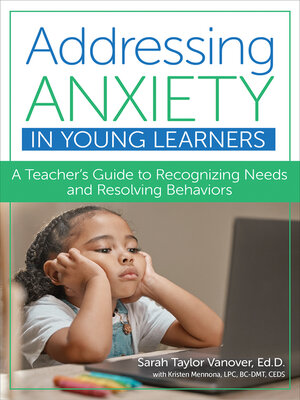Addressing Anxiety in Young Learners
ebook ∣ A Teacher's Guide to Recognizing Needs and Resolving Behaviors
By Sarah Taylor Vanover

Sign up to save your library
With an OverDrive account, you can save your favorite libraries for at-a-glance information about availability. Find out more about OverDrive accounts.
Find this title in Libby, the library reading app by OverDrive.



Search for a digital library with this title
Title found at these libraries:
| Library Name | Distance |
|---|---|
| Loading... |
Anxiety rates are skyrocketing among young learners—and their teachers need explicit training on how to understand and support these students. A concise, reader‐friendly guide written especially for teachers, this urgently needed book will prepare early educators to recognize anxiety issues in children ages 3–8, identify the associated behaviors, and work effectively with students who have anxiety symptoms.
Teachers will start with a well‐organized primer on the different types of anxiety in children, featuring symptoms, causes, triggers, treatment options, and case stories. Then they'll get expert guidance on addressing anxiety and challenging behaviors in the classroom, with dedicated chapters on key topics like assessment, intervention, and the parents' experience.
Ideal for both preservice and in‐service professional development, this introductory guide gives teachers the accessible information they need to understand learners with anxiety and support their success inside and outside the classroom.
TEACHERS WILL:







